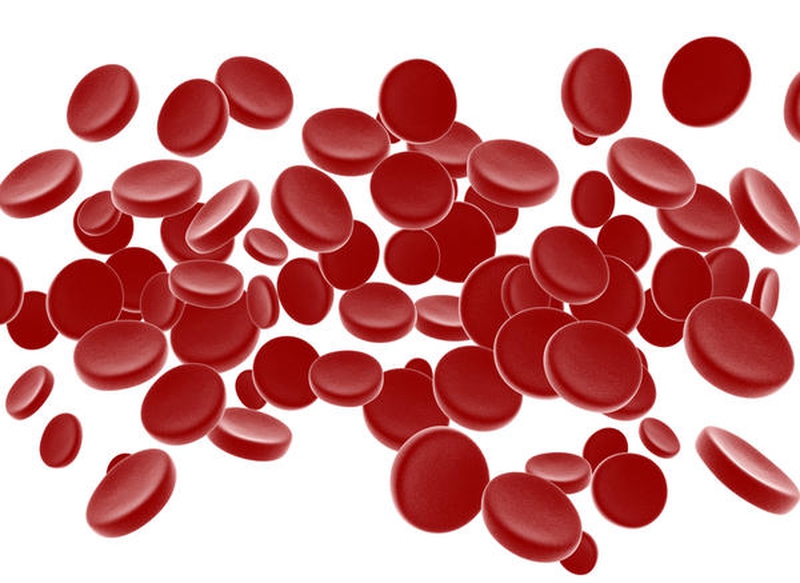The role of red blood cells is to take oxygen to all cells in your body, but they cannot do this job without a protein called hemoglobin. Found in red blood cells only, hemoglobin binds to oxygen molecules and provides your tissues and cells with all the oxygen needed to function properly. Different factors, such as sex, age, overall health, etc., can have an impact on 'normal' hemoglobin levels. You can refer to a hemoglobin levels chart to get an idea about where you stand. Let's find out more about it.

What Is Hemoglobin?
As mentioned already, hemoglobin is actually the protein molecule found in red blood cells. It transports oxygen from your lungs to the body's tissues. At the same time, it takes carbon dioxide from those tissues and delivers it back to the lungs.
Hemoglobin consists of four protein molecules or globulin chains - these globulin chains are interconnected. There are two alpha-globulin chains and two beta-globulin chains in the adult hemoglobin. However, beta-globulin chains are not common in infants and fetuses, but they have two alpha chains as well as two gamma chains. Beta chains replace those gamma chains as the infant continues to grow.
There is an important iron-containing porphyrin compound, also called heme, in each globulin chain, and the heme compound contains an iron atom that plays a big role in transporting carbon dioxide and oxygen in your blood. The red color of your blood is also because of the iron contained in hemoglobin.
Not only does hemoglobin help with transportation of oxygen and carbon dioxide, it also helps maintain the shape of the red blood cells. Naturally, red blood cells are round and have narrow centers, which make them look like a donut but without a hole in the center. The shape of red blood cells may change due to abnormal hemoglobin structure, and this can significantly affect their function.
Hemoglobin Levels Chart
You may have gathered the idea why hemoglobin is so important for the proper functioning of red blood cells, but you have to check the following hemoglobin levels chart to know what levels are considered normal.
Age | Hemoglobin Levels (g/dl) |
Children | |
At birth | 13.5-24 |
Less than a month | 10.0-20.0 |
1 to 2 months | 10.0-18.0 |
2 to 6 months | 9.5-14.0 |
0.5 to 2 year | 10.5-13.5 |
2 to 6 years | 11.5-13.5 |
6 to 12 years | 11.5-15.5 |
Females | |
Age 12 to 18 years | 12.0-16.0 |
Older than 18 years | 12.1-15.1 |
Males | |
12 to 18 years | 13.0-16.0 |
Older than 18 years | 13.6-17.7 |
Low Hemoglobin Levels
Anemia
Your hemoglobin level will drop with the number of healthy red blood cells coming down. This happens when you develop a condition called anemia which is a common reason for low hemoglobin level. With this condition, there will be a considerable drop in oxygen supply to cells. Anemia can be further divided into types based on the size of red blood cell.
You may develop microcytic anemia due to smaller size of red blood cells – this usually happens due to iron deficiency.
You have macrocytic anemia when you have large red blood cells, which is usually the result of a failure of DNA synthesis triggered by deficiencies in folate and vitamin B-12.
You have normocytic anemia when red blood cells are of normal size but there is a drop in the number of red blood cells – it can also have serious nutritional implications.
Other Causes
You can do a number of things to increase your hemoglobin levels. However, you first need to determine the underlying cause of having low hemoglobin levels. It could happen due to one of three problems:
Decreased Red Cell Production: It could be the result of iron deficiency or altered bone marrow hemoglobin production.
Increased Red Cell Destruction: It could happen when you have a liver disease.
Excessive Blood Loss: It could be the result of trauma from a knife wound or gunshot.
Tips to Increase Your Hemoglobin Levels
Once you have determined the cause, you can try treatment options to increase your hemoglobin levels. Here are some possible ways to try:
You may consider transfusing red blood cells.
You may consider receiving a hormone called erythropoietin that helps stimulate the production of red blood cells.
You may opt for iron supplements to tackle iron deficiency. You can also opt for iron-rich foods, such as spinach, eggs, beans, artichokes, seafood, and lean meats. Foods rich in cofactors, such as folic acid, vitamin B6, vitamin-C, and vitamin B12 may also help keep hemoglobin levels within the normal range.
While you may feel tempted to take iron supplements to increase your hemoglobin levels, you should never do anything without discussing everything with your physician.
Elevated Hemoglobin Levels
Causes
You may have elevated hemoglobin levels because of certain health conditions. It may indicate that your body has raised hemoglobin levels to meet increased oxygen needed. It could happen when you live at high altitude, have chronic obstructive pulmonary disease, or smoke a lot. Similarly, disorders like polycythemia-Vera may also increase the number of red blood cells in your body, which in turn will result in elevated hemoglobin levels.
Tips to Lower Your Hemoglobin Levels
Again, it is a good idea to first identify the underlying cause of having elevated hemoglobin levels, but you can try the following to bring your hemoglobin levels down and keep them normal as per hemoglobin levels chart:
You may consider donating blood to help lower hemoglobin levels.
You may consider taking multivitamin that does not include iron.
You may want to avoid cooking in iron cookware.
You may have to limit vitamin-C intake to 500mg/day until you know ferritin level has decreased.
View All Comments /Add Comment